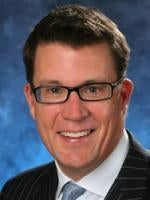Ambulatory surgery center (ASC) development and ownership has made a comeback after a number of years of stagnation due to an oversupply of centers and poor income growth. However, with significant changes in payment methodology, whether under Medicare or commercial third party insurance, the industry has seen a shift in surgical procedures toward less expensive and more efficient settings, most especially ASCs. Moreover, hospitals and health systems have been receptive to partnerships with physician owners of existing centers who are seeking leverage with payers, the kind of leverage that only large providers can bring. Finally, Medicare and other payers now reimburse a larger number of complex procedures when performed in surgery centers, such as interventional cardiology, radiology, nephrology and vascular procedures.
This activity has also seen increased interest in the ownership of ASCs by physician group practices, some of which are multispecialty or multi-subspecialty in nature. When it comes to ownership of an ASC by a multispecialty group practice owned, in part, by primary care, or other, physicians who act as referral sources to physicians (such as surgeons) who perform procedures in the ASC, the Office of Inspector General of the Department of Health and Human Services (OIG) has taken a dim view of these arrangements, arguing that practice owners who do not perform surgical procedures will benefit from their referrals to those who do. This position is consistent with the so-called “extension of the practice” safe harbor regulatory requirements. Note that this article deals with ownership by multispecialty groups that do not consist entirely of surgeons or proceduralists, for which there is no Anti-Kickback Statute safe harbor (there is a safe harbor for “multi-specialty ASCs,” found at 42 C.F.R. § 1001.952(r)(3), in which the ownership is held entirely by physicians who are in a position to refer patients to, and perform procedures at, the ASC).
The OIG’s position is succinctly laid out in a 2003 Advisory Opinion (OIG Adv. Op. 03-05). The Advisory Opinion involved the potential ownership of an ASC by a hospital and a multispecialty group practice. Despite the arguments posited by the requestor, the OIG opined that because the group practice was multispecialty, “there is a substantial likelihood of cross-specialty referrals for services performed in the ASC.” The OIG went on to say that the “[p]roposed Arrangement would allow those Group Physicians for whom the Surgical Center is not an extension of their office practices to profit from their referrals to the Surgical Center or to their partners who perform procedures there. In this respect, the Proposed Arrangement poses the same risks as an ASC owned directly by surgeons and primary care physicians in the same community.”
Despite the position espoused by the OIG in Adv. Op. 03-05, there are plenty of multispecialty group practices that desire to invest in ASCs utilizing the practice as the investor. Whereas this approach is, admittedly, not without risk, and can be tricky, there are a number of arguments and structures that a group, and other ASC investors, might consider.
Referral Pattern Argument
In Adv. Op. 03-05, the OIG opined that the ownership of an ASC by the multispecialty group practice poses the same risks as an ASC owned directly by a combination of surgeons and primary care physicians in the same community. One could argue that the OIG’s opinion draws a weak analogy, thereby missing the mark. In the case of an established, integrated group practice, it is quite likely that the referring physician owners of the group practice have well-established referral patterns that include referrals to the surgeons and proceduralists who work in the group. For example, in an established orthopedic and spine practice that includes physicians who are sports medicine or physical medicine specialists, albeit non-surgeons, those physicians likely already refer most of their surgical patients to their surgeon partners. The same can be said for cardiology practices that include medical cardiologists and interventional physicians. The ownership of an ASC by groups such as those described above are unlikely to change the group’s intrinsic referral relationships. In those instances, it is difficult to see the concerns expressed by the OIG in Adv. Op. 03-05. Conversely, it is altogether possible, if not probable, that a group of primary care physicians who invest in an ASC with unaffiliated surgeons may, indeed, be induced to change their referral patterns as a result of the investment.
Use of Group Practice Safe Harbor
Although there is not an applicable ASC safe harbor under the Federal Anti-Kickback Statute, there is a safe harbor related to investments in group practices (found at 42 C.F.R. § 1001.952(p)). Under this safe harbor, receipt of a return on an investment interest, such as a dividend or interest income, made to a group practitioner investing in his or her own practice or group practice will be deemed to comply with the Anti-Kickback Statute so long as the practice meets the various requirements of the regulation. We believe that if a multispecialty group practice were to own 100% of an ASC, the returns from the ASC could be distributed to all owners — including physicians who don’t perform procedures in the center — without violating the Anti-Kickback Statute. Obviously, this safe harbor is of little use in the context of a joint-ventured surgery center.
Modified Distribution Techniques
We have seen instances where multispecialty group practices have invested in ASCs but have modified their distribution arrangements in an attempt to more closely mirror the extension of practice standards, yet provide those physicians who lack the ability to practice at the ASC a chance to participate in some portion of the investment. Specifically, it would seem an obvious conclusion that a multispecialty group practice is unlikely to invest in an ambulatory surgery center if the cost of the investment cannot be recouped by the group (and indirectly by all physicians who own the group). Thus, an argument can be made that it is not a violation of the Anti-Kickback Statute to allow a multispecialty practice to make an investment in an ASC and to allow the group to recoup its investment, including any direct or indirect costs plus a reasonable rate of return on that investment before the physicians who perform procedures in the ASC are able to begin to profit from those procedures. What constitutes a “reasonable rate of return” will depend upon all facts and circumstances including what a third party lender would charge to loan the funds necessary to make the investment in the ASC. These amounts, it would seem, may be distributed to all of the owners of the group practice, in accordance with their ownership percentages in the practice, without violating the Anti-Kickback Statute. Only after these amounts are recouped would distributions be made to the group practice physicians who perform procedures in the ASC.
Alternatively, and in keeping with the various safe harbors under the Anti-Kickback Statute, a multispecialty group, or its individual physician owners, could invest in the ASC facility and lease the facility to the ASC entity, at fair market value, thereby taking advantage of the space rental safe harbor found in the regulations. In addition, assuming it has the wherewithal to do so, the multispecialty group could act as manager of the ASC providing staff, management and billing services to the ASC in exchange for fair market value compensation.
Although the above-described arrangements would not replace the returns that an investor in an ASC will reap, they would allow non-surgeons and non-proceduralists to participate, financially, in the arrangements.
Summary
ASC investment by multispecialty group practices that include non-surgeons and non-proceduralist owners has long been disfavored by the OIG. While tricky, and not without risk, there may be ways to allow these groups to participate in ASC ownership. Care must be taken, however, to quantify the risks and develop a structure that minimizes any arguments that the arrangement violates the Anti-Kickback Statute.




 />i
/>i

